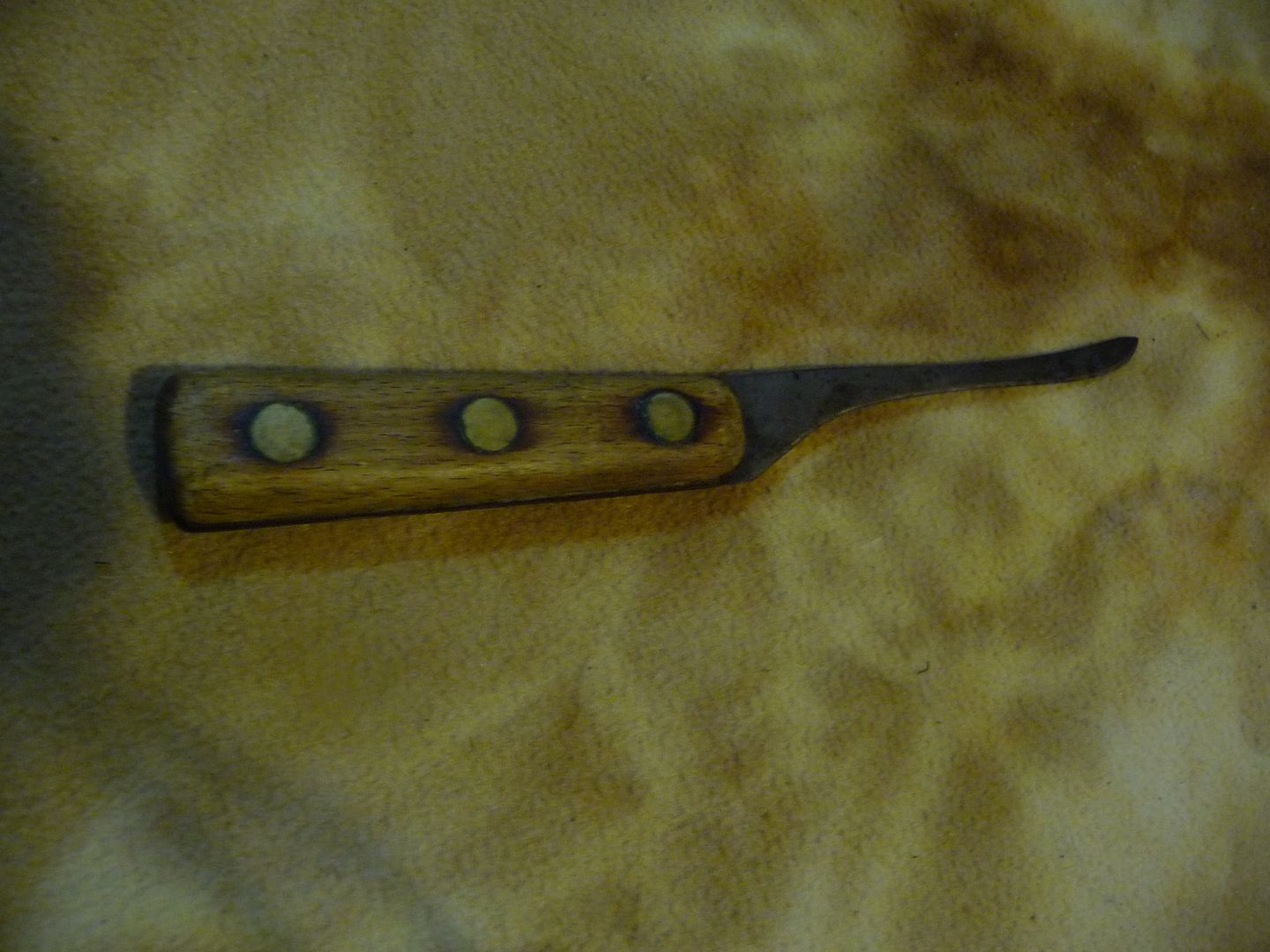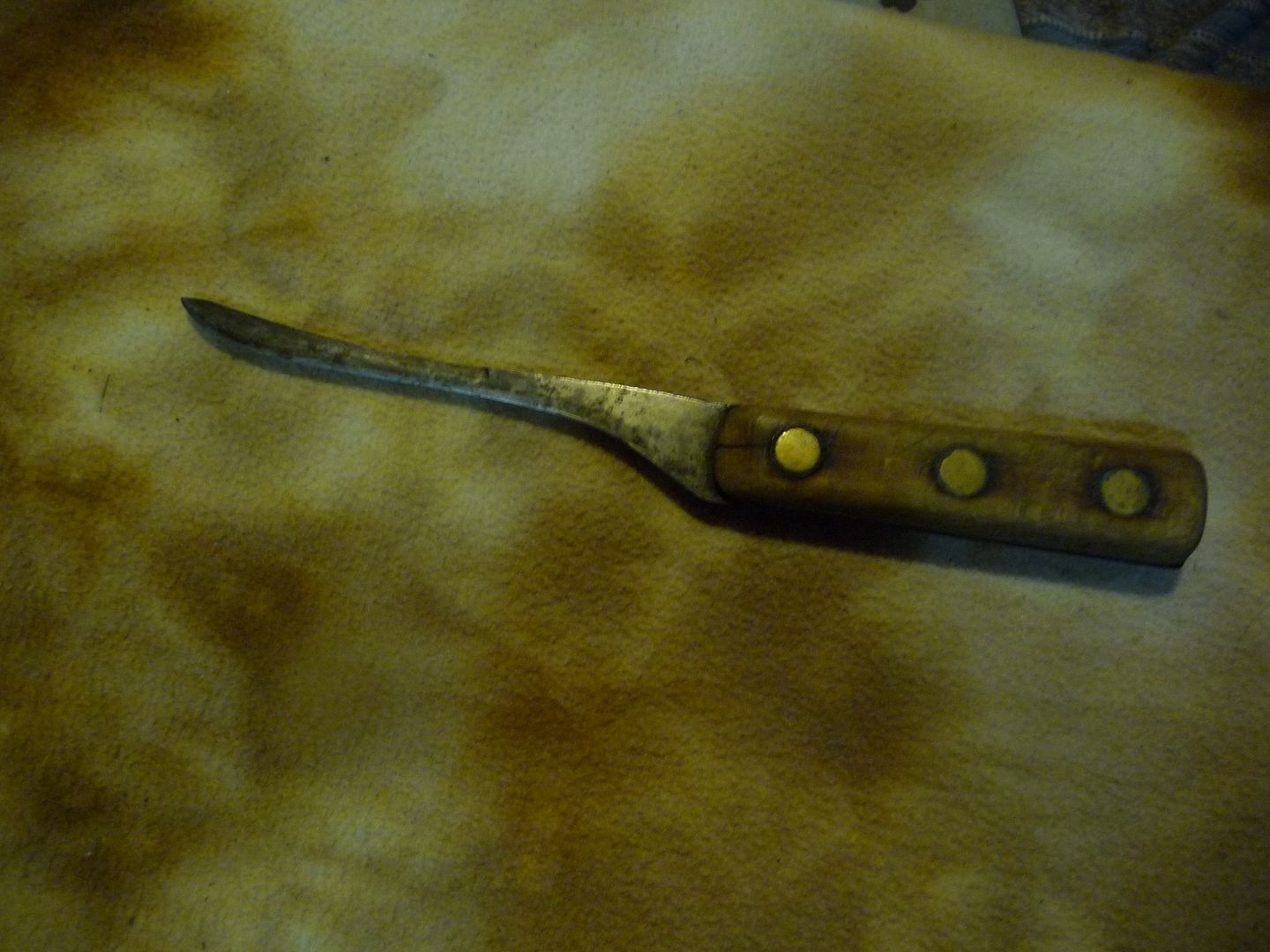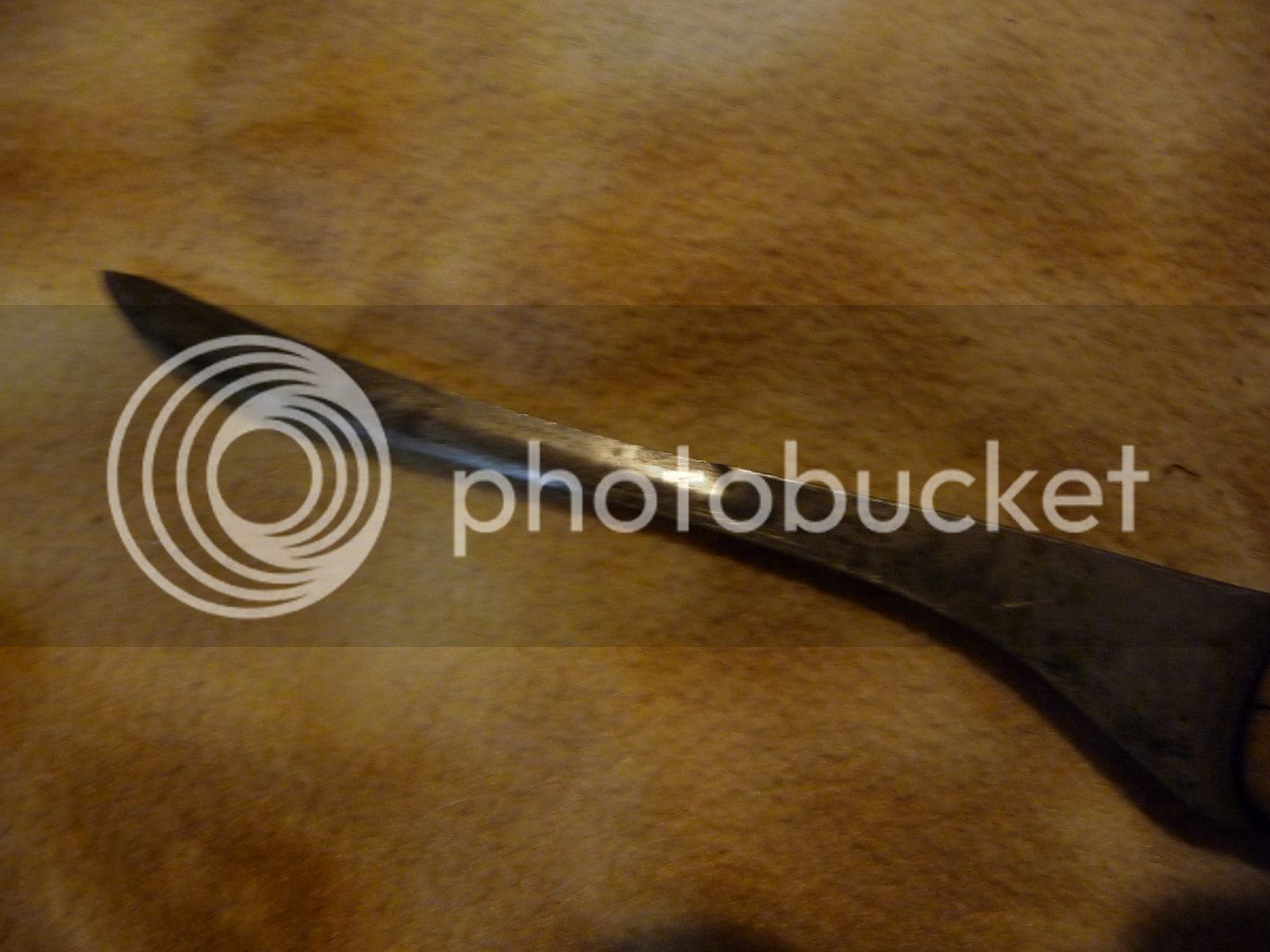I picked this knife up at an old barn sale last summer. I found it interesting because of the large brass rivets used on it reminded me of the type that were found on old trade knives. I know the shape of the blade in it's present state make it a boning knife. I do not know if it had been ground down to this style or was made this way when new. Any thoughts on this? There are no markings at all on this one.












